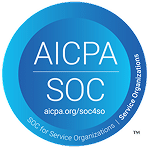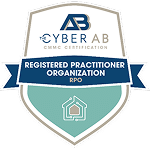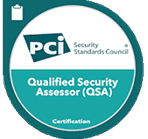The healthcare industry has significantly transformed by introducing highly interconnected and advanced medical devices. While these technological developments hold great potential for improving patient care, they also bring new challenges related to safety, security, and privacy for healthcare providers and patients. The ANSI/AAMI SW96 standard was developed to navigate the complex medical device cybersecurity landscape in response to these challenges.
In September 2023, the FDA officially endorsed and recognized ANSI/AAMI SW96, which marked a pivotal moment in the medical device manufacturing industry. This standard is a comprehensive framework that empowers manufacturers to understand risks, fortify defenses against emerging threats, and take decisive actions to bolster device security.
UNDERSTANDING ANSI/AAMI SW96
The ANSI/AAMI SW96 standard, officially titled “Standard for Medical Device Security—Security Risk Management for Device Manufacturers,” provides a set of best practices and guidelines for medical device cybersecurity. The standard aligns with ISO 14971:2019 and encompasses the entire lifecycle of medical devices, from design through production to post-production.
The primary goal of SW96 is to assist manufacturers in ensuring that their medical devices perform as intended, are dependable, and do not pose any risks to operators, patients, or the environment. Other objectives include:
- Establishing a robust, proactive, and consistent approach to addressing medical device cybersecurity risks.
- Fostering a culture of continuous improvement and medical device vulnerability management.
- Safeguarding data privacy and patient safety.
- Guiding the effective implementation of security controls and risk management strategies.
ANSI/AAMI SW96 should be implemented with AAMI TIR97 and AAMI TIR57 to ensure proper cybersecurity analysis and post-market medical device management processes.
KEY PRIORITIES OF ANSI/AAMI SW96
To ensure the safety and security of their products, medical device manufacturers must prioritize four key areas as identified by the ANSI/AAMI SW96 standard:
Security risk analysis for individual devices and systems:
According to the standard, medical device manufacturers must conduct a security risk analysis of their devices and systems and keep records of the results in a “security risk management file.” This file must include documents demonstrating that the manufacturer has followed the guidelines in clause 5.2 of ISO 14971.
Moreover, ANSI/AAMI SW96 requires the security risk analysis process to consist of threat modeling and identifying cyber threats and vulnerabilities across the medical device’s entire lifecycle. This process pertains to third-party components, software, and hardware vulnerabilities.
Security risk evaluation for broader systems:
Security risks are not limited to individual devices. Therefore, the ANSI/AAMI SW96 standard mandates that manufacturers evaluate the security dependencies of their interconnected systems, including software and networks, to ensure comprehensive protection. Medical device manufacturers must also assess their products under this standard to determine the likelihood of cyber risks, potential impacts, and appropriate mitigation strategies.
Security risk control through multiple methods of protection:
Medical device manufacturers must identify, design, and implement security measures to control risks and verify their effectiveness. Therefore, ANSI/AAMI SW96 does not recommend a one-size-fits-all approach but instead encourages a layered defense strategy with various security controls such as access control, encryption, and secure coding practices to mitigate identified cyber risks.
In addition, the standard highlights the importance of tailoring security risk control measures to the specific context of each medical device. This acknowledges that different devices may have unique cybersecurity challenges that require customized solutions to mitigate risks effectively.
Manufacturers are responsible for identifying, designing, and implementing security controls that align with the device’s intended use, potential vulnerabilities, and operational environment.
Management plans for medical devices before distribution:
Medical device manufacturers must have a security management plan, per the ANSI/AAMI SW96 guidelines. This plan should include protocols for responding to security breaches and communication strategies in case of potential incidents. Before distributing any product, the manufacturer must thoroughly review the security management plan to ensure it is implemented correctly during the production and post-production phases. This review aims to keep the residual security risks within acceptable limits.
Finally, the manufacturer’s leadership must review and approve the security management plan according to the ANSI/AAMI SW96 guidelines.
STRATEGIC ADVANTAGES OF ADOPTING ANSI/AAMI SW96
By adhering to ANSI/AAMI SW96 guidance, medical device manufacturers and healthcare providers can gain several strategic advantages, including:
- Enhanced Device Security and Patient Safety: improve medical device security, thus making it reliable and working as intended. By extension, this enhances patient safety.
- Streamlined Regulatory Compliance: Though the ANSI/AAMI SW96 standard complies with FDA regulations, continuous monitoring, and prompt vulnerability management would help medical device manufacturers comply with other regulations, such as HIPAA, while demonstrating their commitment to cybersecurity.
- Cost Reduction Over Product Lifecycle: Implementing ANSI/AAMI SW96 may require an initial investment. Still, proactive security management reduces long-term costs by preventing security incidents that can lead to product recalls and financial and reputational damages.
IMPACT ON MANUFACTURERS AND HEALTHCARE PROVIDERS
The ANSI/AAMI SW96 is a comprehensive standard that provides medical device manufacturers with a framework to design, develop, and maintain secure products. This framework helps them establish strong cybersecurity practices, improve product quality, and build trust with healthcare providers and patients.
Healthcare providers also have an essential role in ensuring the security of medical devices. By understanding the fundamental principles of this standard, healthcare providers can choose manufacturers that prioritize cybersecurity. Additionally, healthcare providers are crucial in ensuring that medical devices are securely deployed and maintained within their facilities. Implementing the ANSI/AAMI SW96 guidelines may present some challenges for healthcare providers and manufacturers, with the main concern being the availability of resources. For example, effective guideline implementation might require extensive testing, validation, and specialized cybersecurity expertise, which could increase production costs.Therefore, medical device manufacturers and healthcare providers must collaborate to overcome these challenges and create a robust cybersecurity ecosystem for medical devices. By fostering a collaborative culture, manufacturers and healthcare providers can anticipate emerging threats, assure patient safety, and maintain the integrity of their medical systems.
CONCLUSION
As the healthcare industry advances and becomes more interconnected, it is crucial to prioritize patient safety, data privacy, and quality assurance. Healthcare providers and manufacturers can adopt the ANSI/AAMI SW96 guidance to achieve this. This guidance ensures regulatory compliance and encourages stakeholders to improve their cybersecurity practices continuously.
By following the best practices outlined in ANSI/AAMI SW96, stakeholders can stay up-to-date with emerging threats, technological advancements, and other cybersecurity best practices. This proactive approach helps mitigate risks, improve resilience, and maintain the highest standards of patient welfare within the healthcare industry.








